Everyone at the Table: A community food equity assessment for Harrisonburg, VA
ID
CV-80NP (CV-81NP)

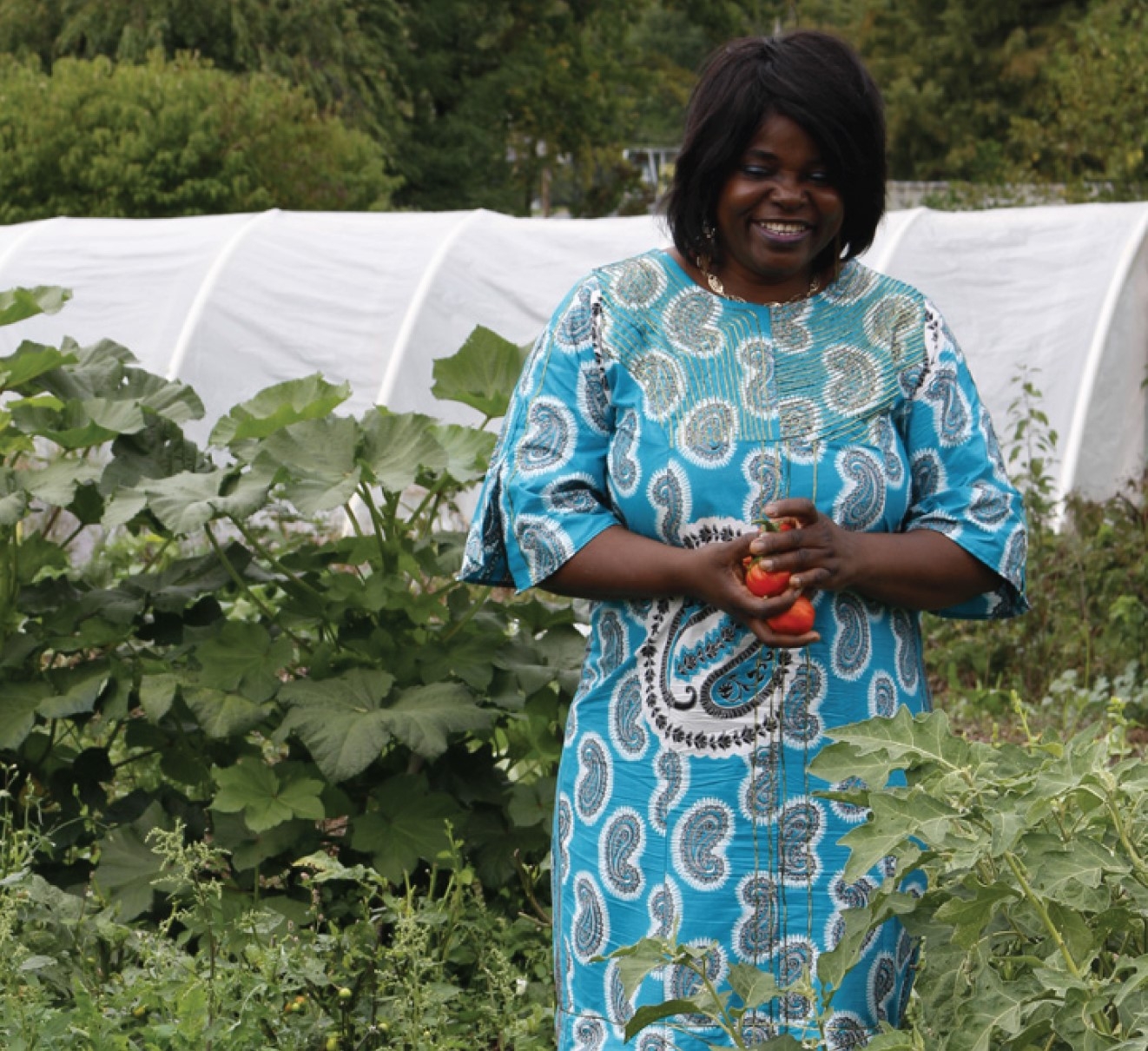
Introduction
The Shenandoah Valley has been a region of abundant food sources for centuries. Early reports document Native Americans using the valley as a fertile traveling route. During the American Civil War, the region was known as the “breadbasket of the South.” Today, Rockingham County, located in the central Shenandoah Valley, has come to be known for its poultry, dairy, and beef production. Downtown Harrisonburg touts its reputation as Virginia’s first recognized culinary district, with plentiful nearby small-scale farms and local successful food-based enterprises. With the region’s legacy of abundance and agricultural productivity as a backdrop to food and farming, many of Harrisonburg’s residents struggle to access fresh, affordable and culturally appropriate foods.
Virginia Cooperative Extension’s Community Viability program has been a leader in supporting the development of community-focused food systems across Virginia by building and leveraging community and agricultural partnerships. Community Viability’s latest initiative, Harrisonburg EATs (Everyone at the Table), is a broad-based food equity assessment to help the city and residents in the strategic planning process. The project aims to deepen the understanding of Harrisonburg’s current health, hunger, and local food system and plan collaborative solutions that strategically improve food security, individual and family health, and the overall local food economy. For this initiative, VCE partnered with the Agua Fund and Skeo. Agua Fund is a non-profit organization that seeks to “improve the quality of life through support of work to protect the natural environment and to help the poor, disadvantaged, and underserved”. In addition to food equity, Skeo provides social equity planning and capacity building related to brownfield revitalization, watershed health, climate adaptation, and equitable development.
This report, Everyone at the Table, summarizes the research conducted as a part of the food equity assessment. The priority food equity zones and recommendations provide a starting point for residents, non-profit organizations, businesses, and institutions in Harrisonburg to work together to create a more just, resilient and thriving local food system.
COMMUNITY GOALS FOR THE HARRISONBURG FOOD SYSTEM
During the outreach conducted for this project, participants shared the following community-based goals for the Harrisonburg food system:
- Food is reliably affordable to all households.
- Food is convenient and accessible to all households.
- Food is healthy and humanely raised.
- Food available reflects the needs of our ethnic and cultural communities.
- Food is locally produced to support the local economy.
- Food systems are resilient, meaning they are reliable in the face of environmental and economic challenges.
- Food and farming jobs provide living wages and safe working conditions.
- Food and farming training opportunities provide career paths for youth and adults who have experienced food insecurity.
- Policy and regulations promote farms, gardens and food-based businesses across the city through regular community engagement.
- All cultural food-based practices are celebrated as a welcomed part of the overall community.
- An equitable food system prioritizes the concerns of people who are ‘food insecure.’
WHAT IS AN EQUITABLE FOOD SYSTEM?
A food system is comprised of all the elements that it takes to grow, process, transport, sell, consume, and dispose of food. In an equitable food system, food for all residents is:
- Affordable
- Convenient
- Healthy
- Culturally relevant, and
- Reliable
The emergence of a more globalized food system has increased interest in a local and regional approach that features independently owned small to mid-sized farms selling products to locally and regionally owned businesses that improve surrounding economies.
As an alternative to the industrialization of much of America’s food system, many localities are advocating for community-focused food systems that emphasize the values and priorities of local residents and businesses. A food system that is “community-focused” and “equitable” looks first to the residents that experience the most insecurity in meeting their day-to-day food needs and seeks to find approaches to increase their access to resources so that they can meet their daily, monthly, and long- term nutritional needs.

FOOD SYSTEM ASSESSMENT METHODOLOGY
To determine the challenges that Harrisonburg residents are facing in meeting their day-to-day food needs, VCE conducted the following research to learn more about how the local food system currently functions:
- Survey: The assessment team developed a 21-question survey, which was translated into Spanish, Arabic and Russian. The survey was available for residents to take online. Volunteers surveyed residents door-to-door in targeted neighborhoods.
- Interviews: The assessment team interviewed 20 food system stakeholders to learn more about their current successes, challenges and future opportunities for creating a community-focused, equitable food system.
- Listening Group: The assessment team convened a public listening group to learn more about how people experience food security and what opportunities are of most interest to residents.
- Data Analysis: Using census data, the assessment team gathered data on Harrisonburg’s demographic and agricultural production context.
- Mapping & Priorities: Using GIS data, the assessment team developed a series of maps to identify priority areas for programs and initiatives.
- Recommendations: The assessment team synthesized the results into five categories of recommendations. The recommendations are based on needs and barriers identified through community input, data analysis, and maps.
- Community Highlights: Finally, as part of the information gathering, the assessment team identified community businesses and initiatives to highlight as a success story for each food system sector.
Harrisonburg Existing Conditions and Context
Harrisonburg has experienced significant changes in demographic composition, population and the economic development of multiple sectors. Over the last 25 years, the population has grown from 30,000 to over 50,000 and become much more ethnically diverse, growing from 9% to 31% non-white. Harrisonburg faces poverty challenges with one-third of residents living under the poverty line and many residents continue to make below Virginia’s median income. However, Rockingham County remains the highest producing and grossing agricultural county in the state, with livestock and crops valued at over $650 million in 2012.
The charts and numbers below highlight that Harrisonburg residents face economic challenges when compared with state averages. An equitable food system for Harrisonburg will respond to the changing demographics, growing population and economic challenges by including strategies that address the needs of low income and culturally diverse communities.
Race and Ethnicity
Harrisonburg’s racial and ethnic diversity have grown since 1990. Today, almost 20% of the population is Latino, 8% African American and 4% Asian. Harrisonburg City Public Schools (HCPS) student data provide the most detailed representation of cultural and ethnic diversity in the city, illustrated by the fact that 55 languages were spoken in HCPS as of Fall 2016.

Population
Harrisonburg’s population has almost doubled since 1990, rising from approximately 30,000 residents in 1990 to over 50,000 in 2014. Harrisonburg’s population now exceeds the population of nearby Charlottesville.

Poverty
Harrisonburg residents make on average less than Virginia’s median income ($38,048 Harrisonburg; $63,907 Virginia). Harrisonburg has a higher poverty rate than Virginia (31.8% Harrisonburg; 11.3% Virginia).
Free and Reduced School Lunch Program, SNAP (Supplemental Nutrition Assistance Program) and WIC (Women, Infants and Children Program) Participation as of January 2017:
- 71.3% of Harrisonburg City Public School students receive free or reduced lunches.
- 7.7% of Harrisonburg’s population receive SNAP benefits.
- 1,993 women and children receive WIC benefits in both Harrisonburg and Rockingham County.

HARRISONBURG FOOD INSECURITY
In a report released by Virginia State University in 2014 called Food Deserts in Virginia, Harrisonburg ranked 4th out of 8 cities with reported high levels of low-income residents. According to the report:
- 18.4% of Harrisonburg residents are food insecure (8,860 people)
- Harrisonburg represented the highest number of low-income residents (31.8%) and percentage of the population eligible for SNAP benefits (37.3%).
Rockingham County Agricultural Census
Production and market value of products raised and produced in Rockingham County have steadily risen since 1987. The majority of crops produced include commodity crops such as corn, soybeans, hay/alfalfa and wheat. Beef and milk cows, egg and meat chickens dominate livestock production. Over 700 farms raise beef cattle. Pig, sheep and lamb production, which were as dominant in 1987 as cow and chicken production, now are less commonly raised on Rockingham County farms. 2012 census data show that small-scale vegetable and fruit production sales totaled $5,698,000, a drastic rise since 1987.



HARRISONBURG FOOD INSECURITY IN THE SHADOW OF AGRICULTURAL BOUNTY
Harrisonburg’s population growth over the last 25 years has included an increase in the racial, cultural, and ethnic diversity of the city. While quantities of agricultural products have not significantly increased since 1987, the value of those products has risen over time. Despite the consistent prevalence and prominence of agricultural production in nearby Rockingham County, many Harrisonburg residents struggle to make enough money to be food secure and provide enough healthy and culturally appropriate foods for their families and households. Many residents have limited access to food markets and stores. Although Rockingham County is the top agricultural producing county in Virginia, residents of Harrisonburg still struggle to put food on their table and access the county’s agricultural bounty.
In a report released by Virginia State University in 2014 called Food Deserts in Virginia, Harrisonburg ranked 4th out of 8 cities with reported high levels of low-income residents.

Analysis and Food Equity Zones
To prioritize areas of most need within Harrisonburg, the assessment team identified six food equity zones based on the following factors. The maps below illustrate the location of these factors to each other.
- Census blocks with low per capita income
- Medium to high housing density
- Lack of grocery store within a ½ mile
- Streets without sidewalks
- Limited land available for gardens
HIGH DENSITY, LOW INCOME NEIGHBORHOODS
Most medium and high density housing is in census blocks with a lower than average per capita income between $6,855 and $23,101 per year. Low density areas are characterized by single family homes that typically have room for private gardens. Medium and high density housing areas include apartment complexes, townhomes and rented properties that typically have less private green space available for gardening or may not allow in-soil garden plots without permission from rental agencies.

GROCERY PROXIMITY AND ACCESS
There are seven grocery chain locations with one super center within Harrisonburg’s city limits. These are supplemented by several ethnic food stores, natural food stores, and independent groceries in Harrisonburg. Grocery stores located within or near downtown Harrisonburg have the best sidewalk access from residential areas to stores.
Grocery stores further from downtown have less sidewalks on both sides of the road. These stores may require a customer to drive or take the bus to travel to and from the grocery store. However, there may be situations where a customer does not have a car and may have to walk along busy roads without sidewalk access. If a person lives more than a half-mile from a grocery store and does not have a vehicle, walking to the grocery store or taking a bus becomes a time consuming and laborious task.

FOOD EQUITY ZONES
Based on the distribution of income, housing density, along with access and proximity to stores, the assessment team identified six Food Equity Zones where two or more of these factors are present.
The food equity zones are areas that are most in need and will provide the greatest value from the recommendations outlined in the next section. Targeted community engagement in each neighborhood would help to better understand specific needs within those zones related to food access issues and to identify potential funding, job and educational opportunities, alongside the community. While the zones highlight areas with the greatest food equity factors present, people who struggle with food access and security live throughout Harrisonburg. Food equity initiatives can be prioritized based on the specific needs of each zone, while also working to develop a city-wide community- focused, equitable food system.


Food System Needs, Barriers and Recommended Strategies
Through the food system assessment, stakeholders and interviewees expressed many needs, barriers and concerns. Based on these needs, this section outlines five strategies to enhance the food system for all of Harrisonburg’s communities. Each strategy includes a short description of potential barriers, followed by recommended action steps to improve and expand access, education, regulatory, and entrepreneurship opportunities to build a community-focused, equitable food system.
1. INCREASE FOOD RETAIL SPACES IN FOOD EQUITY ZONES
Not all residents of Harrisonburg are able to participate in the celebration of local foods. Respondents in the food system assessment shared the following priorities: 1) improve access to fresh produce, 2) support local businesses, 3) stock locally produced foods and agricultural products, and 4) stock more culturally appropriate foods. The Food Equity Zones map (on page 6) and the Food System Asset map (page 13) highlight that there are opportunities for residents to purchase fresh fruits, vegetables and culturally appropriate foods throughout the city. However, food grocery stores are not evenly distributed throughout the city, especially in low-income neighborhoods, as documented by the designation of 3 census tracts in Harrisonburg as “food deserts” by the U.S. Department of Agriculture.
Barriers to food retail spaces that offer affordable, healthy, locally-sourced and culturally appropriate food include:
- Zoning restrictions may prevent grocery stores in food equity zones.
- Most food-based outlets only have information, signage and websites in English, which may exclude non-English speaking community members.
- Locally produced foods can in some cases cost more to support local producers’ livelihoods.
- Individuals may not know where SNAP/WIC benefits can be used to purchase local foods. For example, of the 15 survey respondents who use the SNAP program, only 6 knew SNAP/WIC benefits could be used at the Harrisonburg Farmers Market and none knew that SNAP was accepted at the Friendly City Food Coop.
- Locally produced food is limited in the cultural/ethnic range of foods available for retail sale.

RECOMMENDED ACTIONS
Recommendations to improve access to affordable, healthy, locally-sourced and culturally appropriate foods include:
- Create a handout for WIC/SNAP recipients with a map showing locations where SNAP is accepted including the Farmers Market and Friendly City Food Coop.
- Work with emergency food providers to identify locations for emergency food distribution within food equity zones and identify sources of fresh, local and culturally appropriate food sources, including emerging urban farms and market gardens.
- Provide education and incentive programs to grocery stores to encourage stocking more culturally appropriate foods with bilingual signage as well as more locally produced products.
- Support aspiring entrepreneurs within food equity zones who will provide affordable, local and culturally appropriate food through mobile units, events, food stands, brick and mortar shops, or innovative enterprises.
- Work with City Planning and Community Development to identify and prioritize streets where adding sidewalks and bike paths can improve access to major grocery stores.
- Work with City Public Works to improve bus routes, scheduling and affordability for persons who rely on buses to get to and from the grocery store.
2. PROVIDE LAND FOR HOME AND SMALL-SCALE URBAN FARMING ENTERPRISES
Harrisonburg is located in the most productive agricultural county in the state of Virginia. Feed trucks and grain silos have become an integral part of the city’s character. Many individuals and families within Harrisonburg’s immigrant and refugee communities bring cultural knowledge and histories of farming, cooking and food from their homelands. Increasing access to land for people who live throughout the city, and within food equity zones, would not only assist families struggling to put healthy food on the table each day, but also provide a critical place for families from around the world to connect with their cultural practices and food heritage.
Barriers to land access for home and small-scale food businesses include:
- Residents who live in large apartment complexes or townhomes have limited to no ability to garden at home.
- Zoning ordinances currently restrict community garden development on public and private lands.
- Ghost parcels, where the current landowner cannot be identified, keeps available land from being used for gardening, or other purposes.
- Traditional perceptions that gardening belongs in the country can discourage potential regulatory changes related to urban farming and market gardening.
- It is difficult to know if vacant parcels that are city and privately owned are available for gardening.
RECOMMENDED ACTIONS
Recommendations to provide land for home food subsistence and small scale food businesses include:
- Evaluate how to expand the city’s current business gardens ordinance to promote home- based market gardens and value-added agricultural products that could expand and diversify the local economy.
- Work with Harrisonburg’s Planning Commission to develop a community garden ordinance that allows community garden development in parks, churches and schools, while removing barriers to community gardening in vacant, un-used parcels.
- Conduct a vacant parcel and land use audit to prioritize locations for community and incubator garden spaces based on proximity to food equity zones.

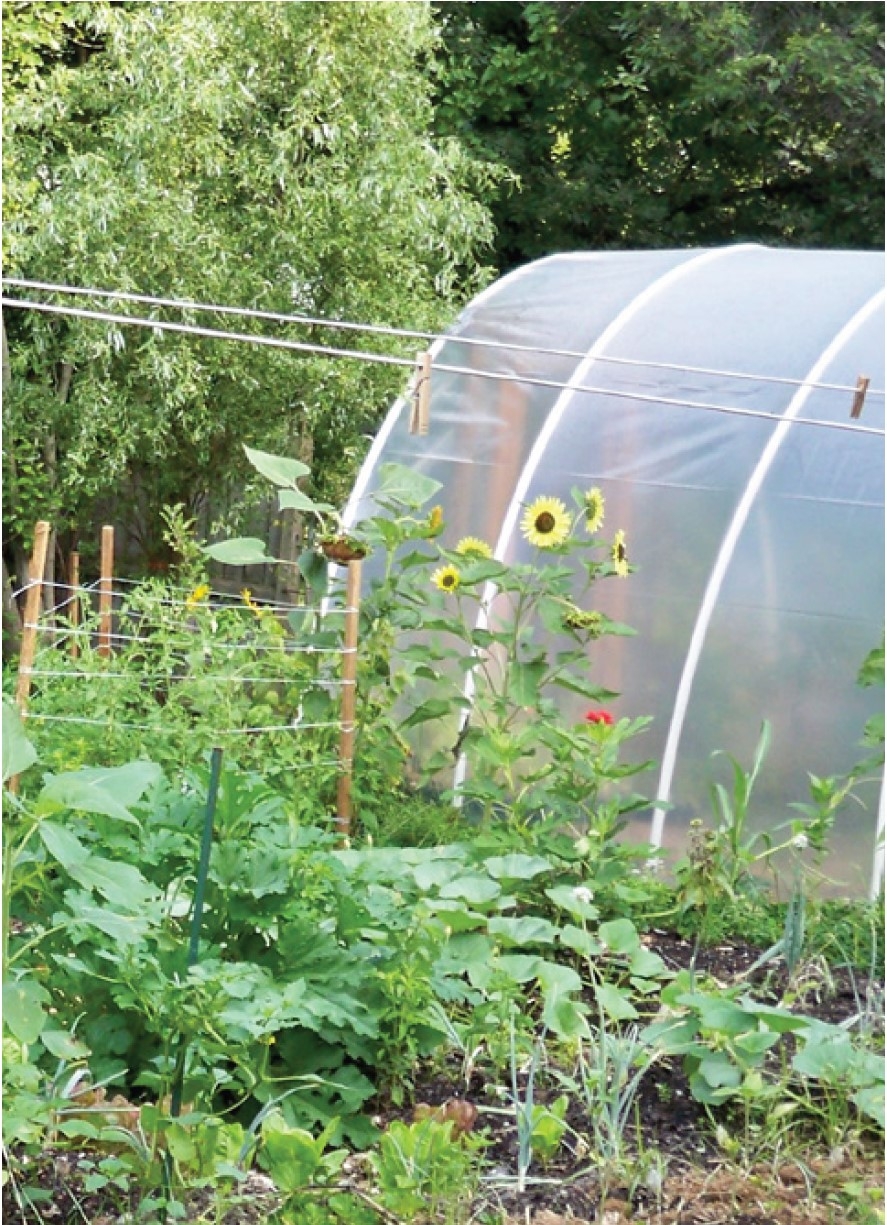
3. BUILD CAPACITY FOR URBAN AND RURAL FOOD AND FARMING ENTERPRISES
Almost 32% of Harrisonburg households qualify as low-income, which means that many people are working multiple jobs to make ends meet and provide for their families. If Harrisonburg created opportunities for residents to start their own small businesses, perhaps a family recipe, background in farming or small niche product could become something that creates an avenue for a career or path to economic stability. Harrisonburg is well known for its entrepreneurial spirit, successful food-related business ventures, and legacy of farming roots. Training and educational opportunities focused on food and farming incubation could further develop Harrisonburg as an innovator and entrepreneurial leader in solving health and hunger challenges through food and farming jobs and business innovation.
Barriers to urban and rural food and farming enterprises include:
- Limited retail outlets for selling products developed in home kitchens.
- Limited to no commercial shared-use kitchens in Harrisonburg that allow outside persons/businesses to use cooking facilities.
- Limited resources for entrepreneurial training and community garden development remain a challenge for new and beginning gardeners and community garden organizers.
- Current business training opportunities do not meet the educational needs of ethnic and culturally diverse training audiences.
- Existing zoning restrictions could limit in-home businesses and do limit on-site sales of food-related products.
- Lack of incubator or start-up programs to support the development of food-related businesses for low-income and/or non-English speaking entrepreneurs.
- Limited funding sources for urban food and farming entrepreneurship programs.
- Limited organizational capacity to apply for and manage grant programs.
- Programs are not advertised well to non-English speaking communities.
RECOMMENDED ACTIONS
Recommended actions to promote urban and rural food and farming enterprises include:
- Partner with residents and relevant non-profit organizations to identify locations, programs and funding opportunities to develop a commercial shared-use kitchen and/or urban food and farming business innovation center within food equity zones.
- Host information sessions with trusted community organizations to learn more about interest in home-based businesses. Utilize culturally appropriate locations and provide interpretation in commonly used languages as needed.
- Identify existing or new non-profits that would be interested in developing/expanding food and farming training programs.
- Develop mentorship and training programs for high-school students and adults that live in food equity zones to learn business management. Develop materials in frequently spoken languages using culturally sensitive approaches.
- Identify locations and additional programs that could provide urban gardening resources within food equity zones. Prioritize hiring residents who are representative of the surrounding neighborhood to provide leadership and staffing for locations.
- Identify and apply for funding sources to develop programs around business entrepreneurship, urban farming and workforce development for food-related jobs such as cooking/food service.
- Develop best practices for increasing access to trainings and educational opportunities for immigrant/refugee communities. Develop a community-focused pledge and ask organizations and businesses to sign on and agree to utilize these best practices in their work.
4. EDUCATE THE HARRISONBURG COMMUNITY ON FOOD EQUITY ISSUES AND OPPORTUNITIES
Community-focused, equitable food system development will take a commitment from across sectors of the food system and community. Harrisonburg’s city officials, staff along with business and organizational leaders will need to determine how best to support initiatives, programs, regulations and businesses that work towards food equity. Understanding how each sector plays a role in food equity will mean coordinating across sectors such as housing, transportation, parks and recreation, public works, educational institutions and hospitals. Local and regional community organizations, foundations and state and federal programs can also be leveraged to implement these strategies.
Barriers to broaden and deepen Harrisonburg’s knowledge of food equity issues include:
- Public perception that living in the Shenandoah Valley and the most productive agricultural county in Virginia means there are not food, health and equity issues.
- Limited awareness of the breadth of the local food system and food equity work needed to build a robust, values-based food system.
- Educational opportunities are limited to university students and advertised to local food enthusiasts in English only.
- Local decision makers may not perceive food equity and insecurity as a priority issue because city residents do not bring urgent household concerns to city council or other public officials.

RECOMMENDED ACTIONS
Recommendations to broaden and deepen Harrisonburg’s knowledge of food equity issues include:
- Present this report and complementary reports at Harrisonburg City Council and Planning Commission meetings.
- Meet with key city staff to share the report and discuss options for implementing recommendations.
- Work with local businesses and community organizations to educate customers and residents on food equity and invite them to contribute to solving food equity in Harrisonburg.
- Work with City Planning staff to integrate food equity recommendations into Harrisonburg’s Comprehensive Planning process (2017-18 update).
- Work with local universities and non-profits to provide community engagement opportunities for residents to learn more about food equity issues by hosting movies, speakers and presentations in culturally appropriate locations and diverse languages.
5. DEVELOP A HARRISONBURG FOOD EQUITY COUNCIL
The strategies outlined in this report will require collaboration and building partnerships across a wide-range of businesses, non-profits, community members and public officials to implement. A ‘Harrisonburg Food Equity Council’ could provide leadership and coordination across stakeholders and resource partners to identify funding, phasing and complimentary roles
for an effective implementation strategy. An entity or backbone support arrangement with a community organization should be established to accept and manage funding for staffing and programming.
Barriers to the development of a ‘Harrisonburg Food Equity Council’ that works to advance food equity in Harrisonburg include:
- Presently, there is not an existing coalition in Harrisonburg to move food system recommendations forward.
- Groups that do exist around food issues are primarily composed of community members not affected by food equity issues and may primarily represent business interests.
- People who are directly experiencing food equity issues often do not have time to volunteer to join a council, committee or to speak publicly about their concerns.
- Differing values, business goals and agendas among local food and food justice-oriented groups may interfere with strategic progress.
RECOMMENDED ACTIONS
Recommendations to te develop a ‘Harrisonburg Food Equity Council’ to advance food equity in Harrisonburg include:
- Identify community, business, non-profit and local government stakeholders invested in developing a food equity action group. Prioritize community stakeholders directly affected by food equity issues.
- Identify existing non-profits or funding sources that could hire a staff person to coordinate development and maintenance of a council. Prioritize hiring a current Harrisonburg resident and/or person directly affected by food equity issues.
- Convene a strategic planning process to develop vision, values, mission and goals for the Council. Include community engagement opportunities to hear from residents, especially those in food equity zones about their needs, priorities and interests in working with the food equity council.
- Using the recommendations outlined in this report, begin by supporting non-profit, for-profit, regulatory and educational programming that align with these recommendations and the Council’s strategic plan.

HARRISONBURG FOOD SYSTEM HIGHLIGHTS
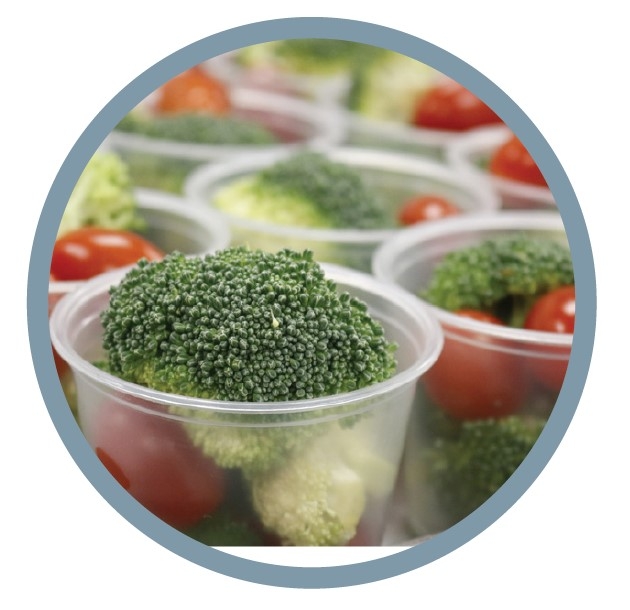
HARRISONBURG CITY PUBLIC SCHOOLS FARM TO SCHOOL PROGRAM
Under the leadership of Andrea Early, the Executive Director of School Nutrition, Harrisonburg City Public Schools have incorporated a substantial amount of local produce into their schools’ cafeterias. This Farm to School initiative began in 2007, and consisted only of lettuce purchases from a local farmer. Efforts have grown significantly since then, with 8-10% of total food dollars now spent annually on locally produced goods (Benson et al., 2013). This initiative is not limited to cafeteria ordering, however. Students have become increasingly aware of their local food system through programs such as the USDA Fresh Fruit and Vegetable Program, farm visits, and school garden clubs.

EMERGING CHEFS FARM TO TABLE COOKING COURSE
Middle schoolers interested in learning how to prepare healthy, affordable and locally sourced foods have been cooking up dishes from around the world for two years at Skyline Middle School. As a part of On the Road Collaborative’s After-school Enrichment Program, the class teaches youth the core principles of cooking, from knife safety and proper technique, to where their food comes from and how to run a restaurant. In the
Fall of 2016, 10 middle school students in the class hosted an evening restaurant take-over at the Little Grill Collective, where they cooked, plated and served a five-course meal. The event was a sell out and, at the end of the night, restaurant goers gave them a standing ovation.
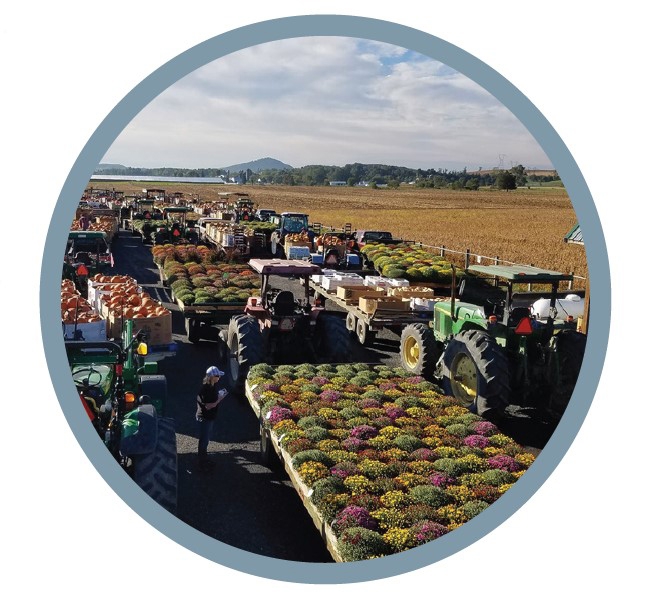
SHENANDOAH VALLEY PRODUCE AUCTION
The Shenandoah Valley Produce Auction (SVPA) was founded in 2005 to connect local farmers to restaurants and stores in the area. Since its founding, the produce auction now supports small to mid-scale food distribution throughout the mid-Atlantic region. SVPA has played a critical role in supporting farm to table programs for schools, hospitals and institutions throughout the Valley. Prospective buyers can find competitive prices for high volumes of food at bulk rates, which makes prices comparable to major food distributors.
In recent years, the auction has sought to expand its number of USDA Good Agricultural Practice (GAP) Certified farmers. These farmers follow strict guidelines to ensure cleanliness and safety.
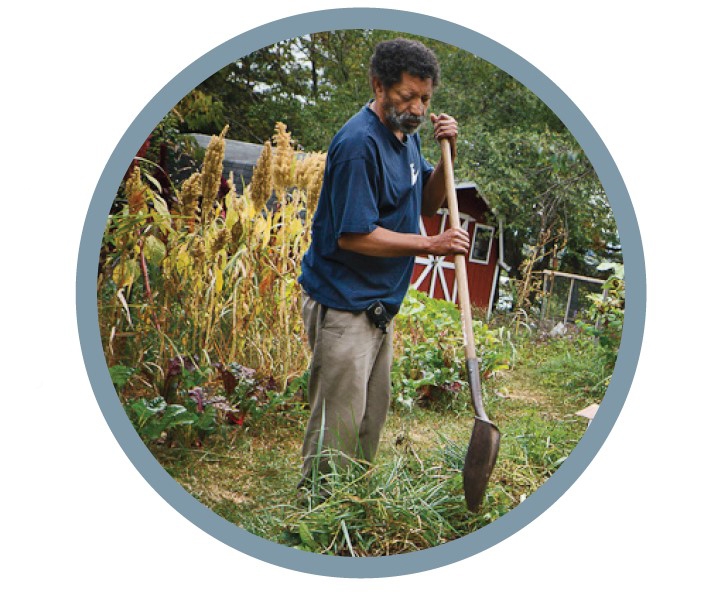
VINE & FIG: THE NEW COMMUNITY PROJECT IN HARRISONBURG
Vine & Fig is a sustainable living center organized under the faith-based non-profit New Community Project. Their mission is to “cultivate and celebrate works of mercy, social justice, and ecological health, and to build a society in which it’s easier to be good.” They provide a supportive home for those battling homelessness and addiction, as well as a demonstration site for sustainable and just living. Residents of the home live there and tend the bountiful garden, which provides for the residents.
They have assisted in the creation of the Harrisonburg Mennonite Community Garden as well as an inventory and future database of all fruit and nut trees in the city with the James Madison University Urban Agroforestry Project.
Community Outcomes
These strategies will require a combination of short-term wins and long-term commitment to realize the food system goals outlined by the Harrisonburg community. However, through persistence, partnership building and collaboration, these actions collectively have the ability to achieve the following outcomes:
- Increased access and affordability for locally produced and culturally appropriate foods in food equity zones.
- Increased access to land within the city for gardening and small-scale urban farms.
- The establishment of an urban food and farming economic sector for Harrisonburg.
- Increased educational and training opportunities for residents who are interested in urban farming, food and agricultural careers, and entrepreneurial business opportunities.
- Coordinated group of leaders working to build an equitable and just food system in Harrisonburg.
HARRISONBURG FOOD SYSTEM ASSETS
Harrisonburg’s local food system includes thriving small and medium sized farms, businesses and organizations.

Acknowledgements
Funding for this project was graciously provided by the Agua Fund and Virginia Tech’s Department of Agricultural, Leadership, and Community Education’s Community Viability Fund.
Virginia Cooperative Extension would like to thank Beth Schermerhorn, Abbas Abid, Courtney Vengrin, and Jessica Stanford for their contributions to the development of the food equity assessment and this report. Virginia Cooperative Extension would additionally like to thank the project’s interpreters Paloma Saucedo, Gulala Hassan, Ricardo Cortez, Mezikir Tsegai and Andrey Ivanov. Their assistance in conducting community interviews, developing organizational profiles, collecting data, and coordinating with other professionals involved in the local food sector to expand healthy food access in Harrisonburg, Virginia was invaluable.
For questions about this report Everyone at the Table: A Food Equity Assessment for Harrisonburg, Virginia, please contact:
Eric S. Bendfeldt
Extension Specialist, Community, Local, and Regional Food
Systems, Community Viability Program
Virginia Cooperative Extension
2322 Blue Stone Hills Dr. Suite 140
Harrisonburg, VA 22801
Email: ebendfel@vt.edu
Phone: (540)432-6029
Beth Schermerhorn
Associate, Skeo
100 10th St. NE, Suite 101
Charlottesville, VA 22902
Email: bschermerhorn@skeo.com
Phone: (434)226-4960
Photo Credits:
Front Cover Mobile Bus Photo: Photo Courtesy of Harrisonburg City Public Schools. Front Cover Swiss Chard stems photo: Photo courtesy of Beth Schermerhorn. Page 7 Kurdish Circle Dance photo: Photo courtesy of Beth Schermerhorn. Page 8 Garden photo: Photo courtesy of Beth Schermerhorn. Page 9, Garden photo: Photo courtesy of Beth Schermer- horn. Page 12: Emerging Chefs Photo: Photo Courtesy of On the Road Collaborative; SVPA photo: Photo Courtesy of the Shenandoah Valley Produce Auction; Vine and Fig: photo Courtesy of Vine & Fig, Aaron Johnston. All other photos provided by VCE.

SOURCES
Benson, M.C., & Niewolny, K. (2013). Virginia Farm to School Resource Guide: Helping connect Virginia foods to Virginia schools. Virginia Polytechnic Institute and State University. Retrieved from: https://vtechworks.lib.vt.edu/bitstream/ handle/10919/56049/AEE-77.pdf
Harrisonburg City Public Schools (2016). Support for English Learners: Retrieved from: http://harrisonburg.k12.va.us/Instruction/English-as-a-Second-Language
U.S. Census Bureau. (2017). Quick Facts. Harrisonburg, Virginia. Retrieved from: https://www.census.gov/quickfacts/table/PST045215/51660
U.S. Department of Agriculture, National Agricultural Statistics Service. (2014). 2012 Census of Agriculture. Virginia State and County Data. Vol. 1: Part 46, AC-12-A-46. Available at: https://www.agcensus.usda.gov/Publications/2012/Full_Report/Volume_1,_Chapter_2_County_Level/Virginia/vav1.pdf
Niewolny, K. Latimer, J., Bendfeldt, E., Scott, K., Morton, S., Miller, C., Nartea, T., Githinji, L., Gehrt, K., Tyler-Mackey, C., Neale, S., Vines, K., & Grisso, R. (2016). VCE Model of Community, Local, Regional Food Systems. ALCE-154NP Retrieved from: http://www.pubs.ext.vt.edu/content/dam/pubs_ext_vt_edu/ALCE/ALCE-154/ALCE-154-PDF.pdf
Virginia Food Desert Task Force. (2014). Food Deserts in Virginia. VCE-294. Retrieved from: https://www.pubs.ext.vt.edu/content/dam/pubs_ext_vt_edu/VCE/VCE-294/VCE-294_pdf.pdf

Virginia Cooperative Extension materials are available for public use, reprint, or citation without further permission, provided the use includes credit to the author and to Virginia Cooperative Extension, Virginia Tech, and Virginia State University.
Virginia Cooperative Extension is a partnership of Virginia Tech, Virginia State University, the U.S. Department of Agriculture (USDA), and local governments, and is an equal opportunity employer. For the full non-discrimination statement, please visit ext.vt.edu/accessibility.
Publication Date
June 24, 2022



